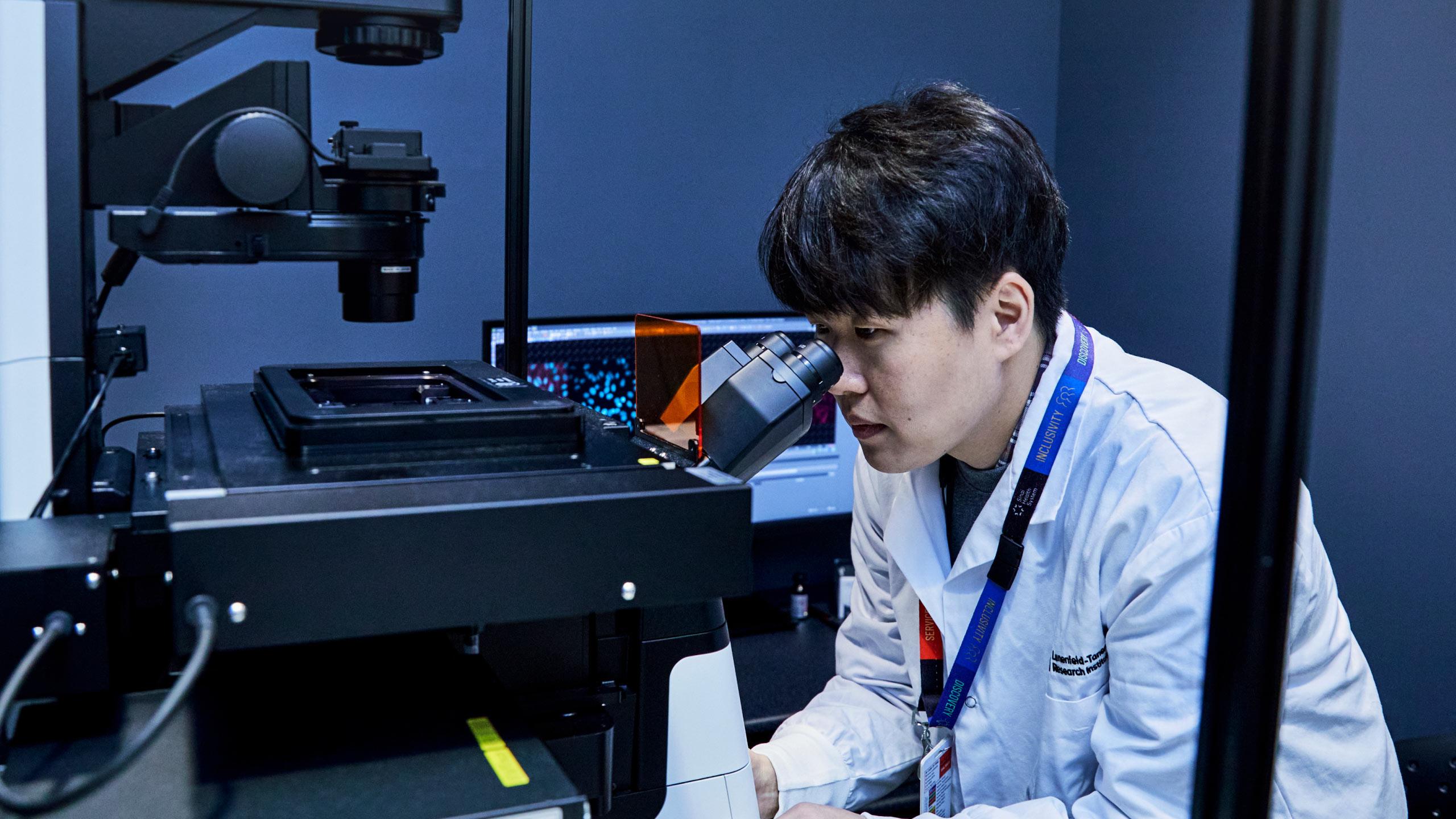Endometriosis
Learn more about endometriosis and how it is treated.
Overview
Endometriosis is a condition in which the type of tissue that normally grows inside the uterus grows in areas outside the uterus.
During a typical menstrual cycle, the endometrial tissue lining your uterus thickens around ovulation. You will then shed much of that tissue during your period.
However, if you have endometriosis, endometrial tissue also grows outside the uterus. It can grow on the ovaries, fallopian tubes, outside the uterus and in other pelvic areas. The tissue continues to thicken each month but cannot shed outside the body.
About 10 per cent of women experience endometriosis. It may run in families, but the cause is generally unknown.
Symptoms
Symptoms vary and may depend on the location of your endometriosis. Symptoms may include:
- Painful periods
- Pain during sexual intercourse
- Painful bowel movements
- Painful or frequent urination
- Infertility
- Chronic pelvic pain
Diagnosis
There is no single test that can confirm an endometriosis diagnosis.
A gynaecologist can often provide a diagnosis based on your symptoms alone.
In some cases, medical imaging with ultrasound or, less commonly, magnetic resonance imaging (MRI), can also be used to diagnose endometriosis.
Treatment
Treatments for endometriosis focus on managing painful symptoms. There is currently no cure.
A gynaecologist will work with you to develop a care plan specific to your needs. Note that hormonal therapy may not be suitable if you are trying to conceive.
Oral pain medication
Non-steroidal anti-inflammatory medications, such as ibuprofen or naproxen, can help reduce inflammation and decrease pain from endometriosis.
Progestin-only hormone therapy
Birth control medication that uses only progestin (such as IUDs, under-the-skin implants, birth control shots and pills) can help relieve symptoms by suppressing hormonal fluctuations.
Gonadotropin-releasing hormone (GnRH) agonists
This type of medication relieves symptoms by causing the ovaries to stop producing estrogen, which induces a reversible, medical menopause.
Luteinizing hormone-releasing hormone (LhRH) agonists
LhRH agonists help relieve symptoms by suppressing the production of estrogen.
GnRH antagonists
This type of medication causes your ovaries to stop producing estrogen and progesterone, which helps relieve symptoms of endometriosis.
Surgical management
Laparoscopic surgery to remove endometriosis tissue can relieve pain and may help patients who are trying to become pregnant. This is called excision of endometriosis.
This surgery can often provide long-lasting relief from symptoms. However, symptoms can return.
If other treatments do not work, or if adenomyosis is suspected, a hysterectomy to remove the uterus, in addition to excision of endometriosis, can help relieve pain.
Hysterectomy should be carefully considered in patients younger than 35 to 40 years, as they may enter menopause earlier even if they retain their ovaries.







